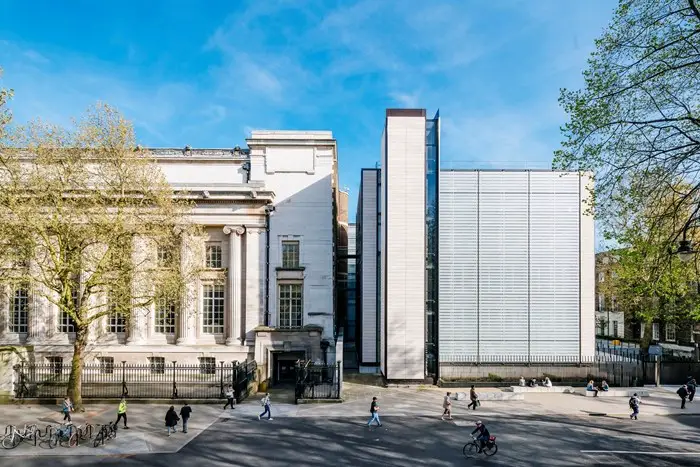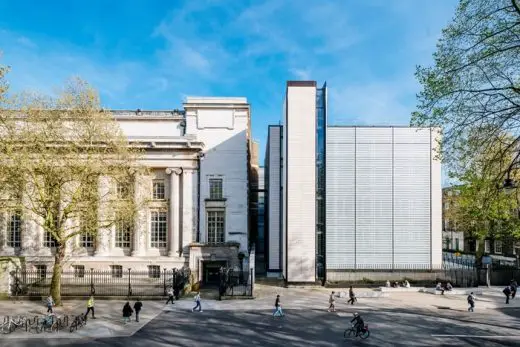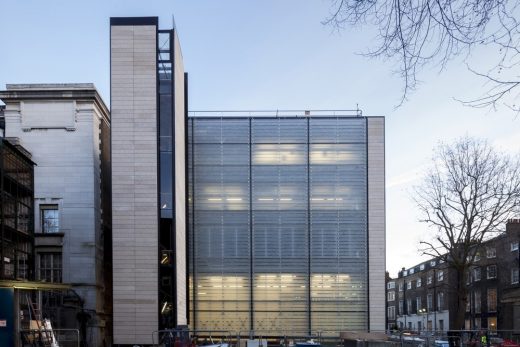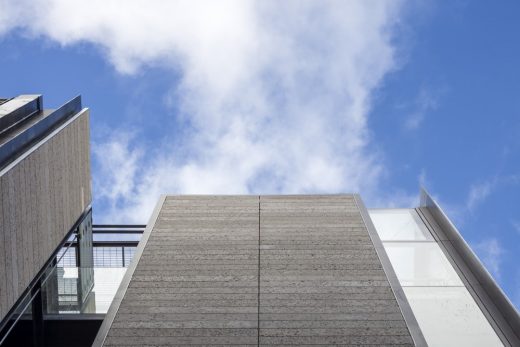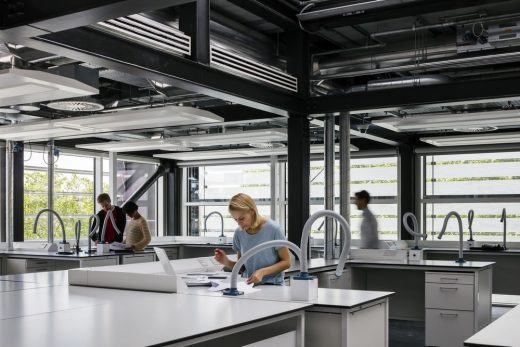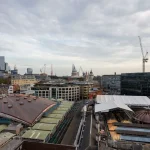British Museum World Conservation and Exhibitions Centre London, WCEC Building, BM Extension
British Museum World Conservation and Exhibitions Centre
BM Building Extension Development, London design by Rogers Stirk Harbour + Partners architects
21 Jul 2017
British Museum World Conservation and Exhibitions Centre Design
Design: Rogers Stirk Harbour + Partners, architects
British Museum WCEC
Rogers Stirk Harbour + Partners’ extension to the British Museum has been shortlisted for the Stirling Prize
The British Museum World Conservation and Exhibitions Centre is one of the largest redevelopment projects in the British Museum’s 260-year history. Designed by senior partner Graham Stirk, with partner John McElgunn as project architect, the building’s simple exterior belies the complexity of the site, and marks a new phase of the practice’s architectural output.
Speaking as the shortlist was announced, senior partner Graham Stirk said: “We are understandably delighted to be included on the shortlist. The national significance of the British Museum represented a challenging site within which to build a coherent, modern building.
We aimed to create a building clear in both plan and section which are simply expressed to reinforce and contrast the formal historic context in which it sits. The resulting building represents a new aspect to our vocabulary; a form of contextual modernity, and we have been intellectually enriched by the whole experience.”
Photos below by Paul Raftery:
View of WCEC from Malet Street Gardens to the north:
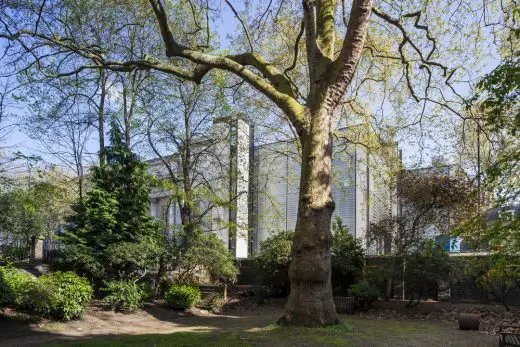
The building consists of five vertically linked pavilions (one of which is located entirely below ground) and the design is sensitive to the British Museum’s existing architecture, whilst maintaining its own contemporary identity. The Portland stone and kiln-formed glass used on the pavilions are inspired by the materials of the existing Museum and the shared façade subtly reveals activities within.
The conservation studios are housed at the top of pavilions, bringing the previously distributed departments together and providing good quality daylight for detailed work.
View of WCEC from west down Montague Place:
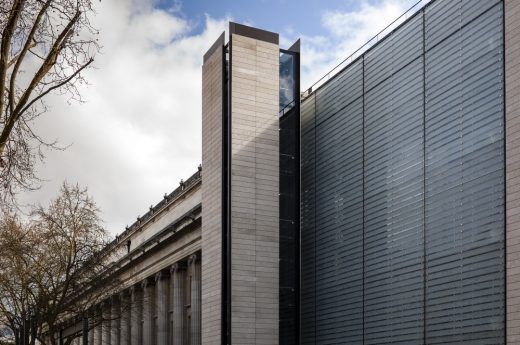
The Sainsbury Exhibitions Gallery is located at the same level as the Great Court for easy public access. This gallery has replaced the Reading Room as the Museum’s largest temporary exhibition’s space; excellent new logistics connections allow the Museum host ever bigger and bolder exhibitions.
A large proportion of the new wing is underground, including the Collections Storage Facility, where the heavy floor loading requirements can easily be accommodated and the most stable environmental conditions can be found. A large lorry lift has been incorporated to service the WCEC and the wider estate, to ensure that large and fragile objects can now be moved in safe and controlled conditions.
Alignment of kiln-fired glass planks and open-textured Portland-stone glass cladding at WCEC:
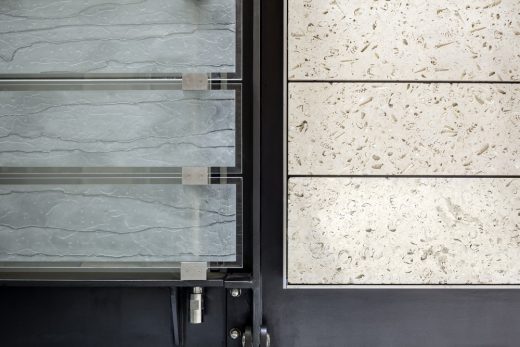
Despite the energy hungry nature of the brief, the WCEC achieved BREEAM excellent by employing careful use of solar shading, energy consumption and preservation. Dramatic reductions in CO2 emissions from the laboratories have also been implemented.
View of WCEC on the west corner of the British Museum:
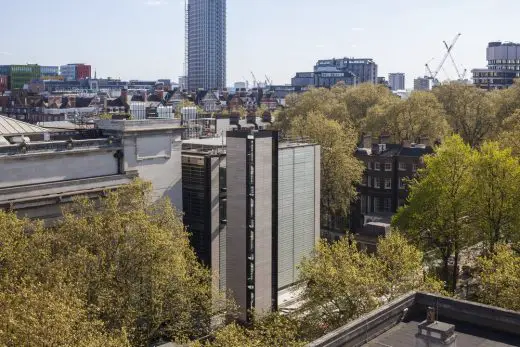
The project architect, RSHP partner John McElgunn said: “Having the World Conservation and Exhibition Centre short listed for such a prestigious architectural award is a wonderful acknowledgment for the building.
Balconies encircling atrium at WCEC:
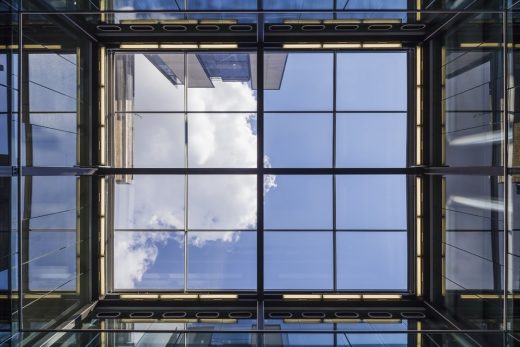
This building is the missing jigsaw piece of the museum’s estate that focuses on the difficult ‘behind the scenes’ work and complex logistical requirements which are essential to the museum’s function.
Working very closely with the museum’s user groups we feel the WCEC solves a very difficult brief on a challenging site to create a contextual piece of modernism of which we are very proud.”
View of the British Museum from the north with WCEC to the west:
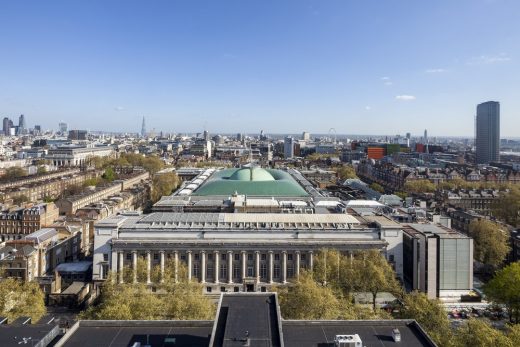
This is one of six buildings on the shortlist for the 22nd annual Royal Institute of British Architects (RIBA) Stirling Prize for the UK’s best new building:
The Sainsbury Exhibitions Gallery at WCEC:
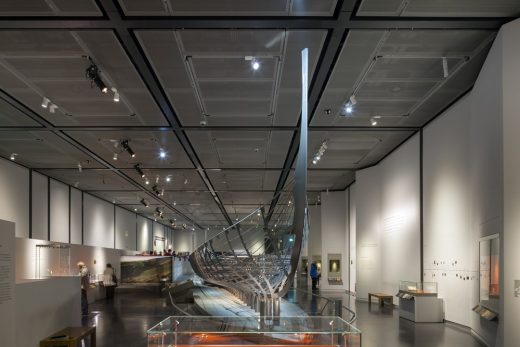
About Roger Stirk Harbour + Partners
Rogers Stirk Harbour + Partners (RSHP) is an award-winning, international architectural practice based in London. Over the past three decades, RSHP has attracted critical acclaim with innovative projects across Europe, Asia, Australasia and North America. The practice is experienced in designing a wide range of building types including office, residential, transport, education, culture, leisure, retail, civic and healthcare.
Main level conservation studio at WCEC:
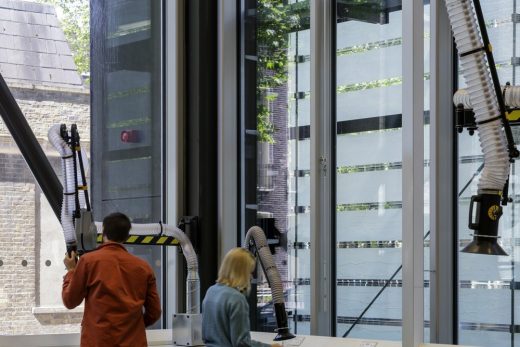
About Roger Stirk Harbour + Partners’ past Stirling prize achievements
The World Conservation and Exhibitions Centre, which was completed in late 2014, is the 9th building by the practice to be included on the shortlist in the 22 years of its existence. RSHP has won two Stirling Prizes in the past; 2006, for Barajas Airport, and 2009, for the Maggie’s West London Centre.
1997 Thames Valley University Learning Resource Centre
2000 88 Wood Street
2002 Lloyd’s Register of Shipping
2006 Terminal 4 Barajas Airport (Madrid) (winner)
National Assembly for Wales
2009 Maggie’s West London Centre (winner)
Bodegas Protos
2015 Neo Bankside
2017 British Museum (Shortlisted; winner TBA)
British Museum World Conservation and Exhibitions Centre images / information from Roger Stirk Harbour + Partners
British Museum World Conservation and Exhibitions Centre in London
British Museum WCEC Building Shortlisted for RIBA Stirling Prize
Design: Rogers Stirk Harbour + Partners Architects (RSHP)
RSHP’s British Museum extension shortlisted for the Stirling Prize
The WCEC building is located on the north-west corner of the British Museum site in Bloomsbury. It consists of five vertically linked pavilions (one of which is located entirely underground), and houses a new exhibition gallery, laboratories and conservation studios, storage, and facilities to support the Museum’ logistical requirements and loans programme.
The glass-roofed atrium at WCEC:
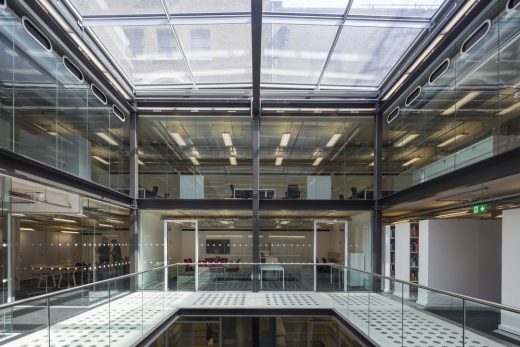
This building is the realisation of an extremely complicated brief in terms of spatial challenges, technical requirements, and engineering technologies. Its achievement derives from the elegant and simple way these challenges are met, while maintaining a clear and coherent diagram and a refined and rational building enclosure.
Extensive below-ground storage space at WCEC:
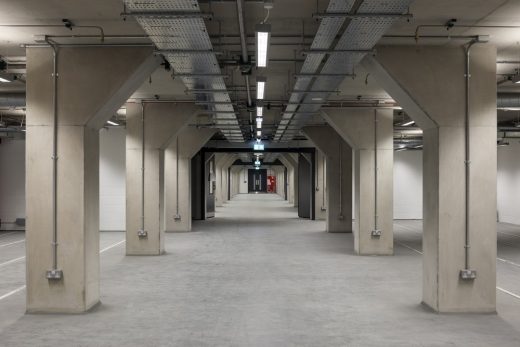
The spaces provided for exhibition allow objects of a size and height which would not be possible to exhibit elsewhere in the museum. Objects can be delivered at street level in lorries which are then taken to lower floors by a platform lift which sinks into the ground without disturbing the landscape.
The jury felt that the substantial accommodation for curation activities, with demanding constraints on direct light, thermal control and pest prevention, are seamlessly threaded into the overriding diagram and structure, with an admirable rigour and clarity.
Graham Stirk, WCEC lead architect and Partner at RSHP:

Grander public spaces are accommodated in the main museum, while the new extension provides simple circulation through glass lifts, bridges and glazed lobbies, making the journey through the building clean and enjoyable.
A system of fritted glazed horizontal panels allow controlled light into the building while insuring protection for the exhibits either on display or within the workshops. This allows curation of precious artefacts to occur in an environment that maintains access to natural light.
left – A freestanding staircase at WCEC ; right – Bridge to original building in east tower through converted window:
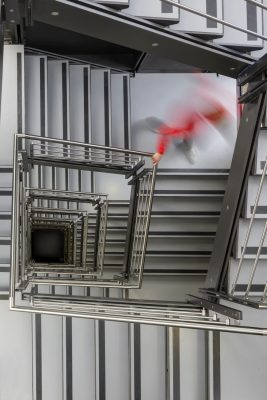
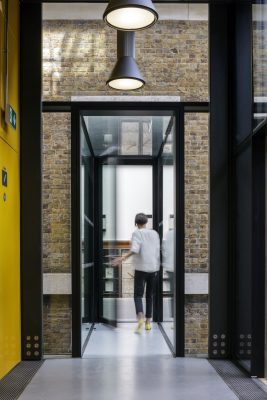
The jury appreciated the way the architects had overcome planning and heritage concerns in relation to the building for new offices which are sunk below ground but grouped around an attractive glass-roofed central space.
Generally the jury admired the skill and control the architects had demonstrated in realising the client’s enormously complicated and demanding brief while maintaining a rigorous and disciplined plan and an elegant external cladding system.
1:500scale model of WCEC from northwest – photo by RSHP:
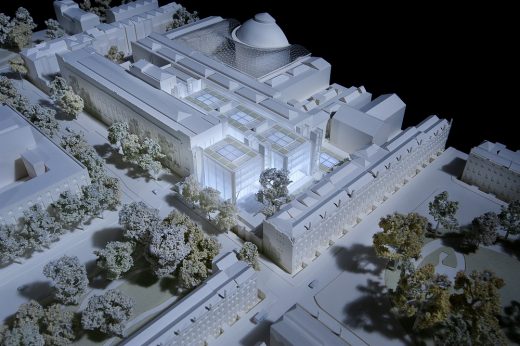
Structural Engineers: Ramboll
M&E Engineers: Arup
Quantity Surveyor: AECOM
Project Management: Equals
Acoustic Engineers: Arup
Access Consultant: David Bonnett Association
Landscape Architects: Gillespies
Lighting Design: Arup
Planning Advisors: The Green Brain Consultancy and Montagu Evans
Construction Managers: Mace
Internal Area: 18,000 m²
British Museum World Conservation and Exhibitions Centre images / information from RIBA
22 Jun 2017
RIBA Awards Winner in 2017
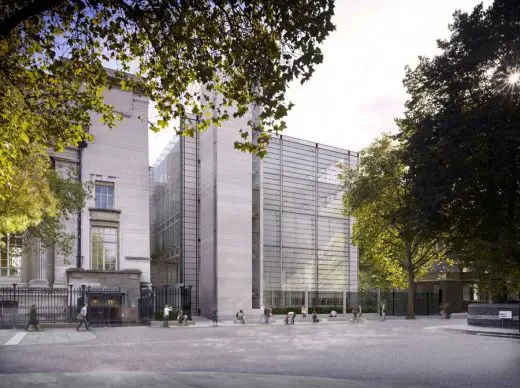
image © the Trustees of the British Museum
British Museum World Conservation and Exhibitions Centre is one of winners announced for the London region.
British Museum Expansion architects : Rogers Stirk Harbour Partners
British Museum World Conservation and Exhibition Centre
Phone: +44 20 7323 8299
Location: British Museum, Great Russell St, Bloomsbury, London, WC1B 3DG, England, UK
London Building Designs
Contemporary London Architectural Designs
London Architecture Links – chronological list
London Architecture Tours – bespoke UK capital city walks by e-architect
British Museum Extension Competition 2007 won by Rogers Stirk Harbour & Partners.
Shortlisted architects incl. Bennetts Associates, Rick Mather Architects, Stanton Williams, Wilkinson Eyre
Key London design by Richard Rogers : Lloyd’s Building
Comments / photos for the British Museum World Conservation and Exhibition Centre London Architecture page welcome

